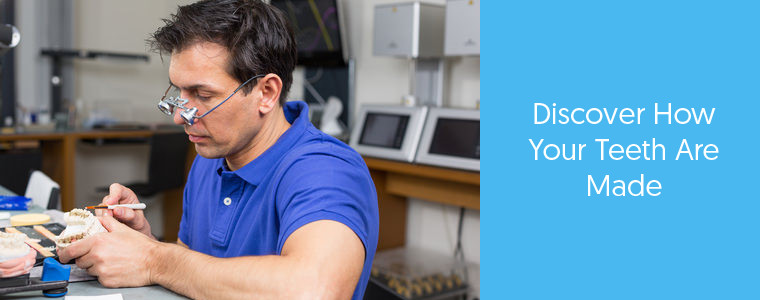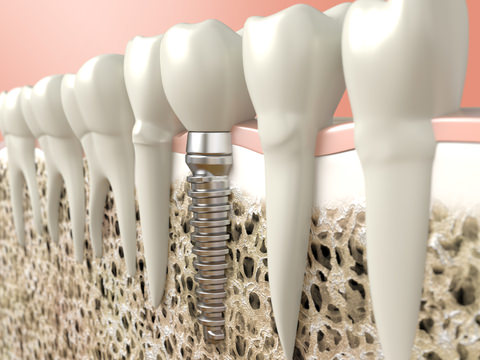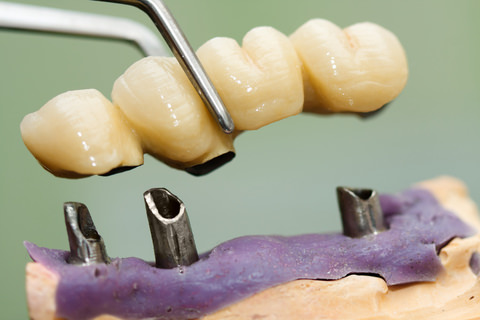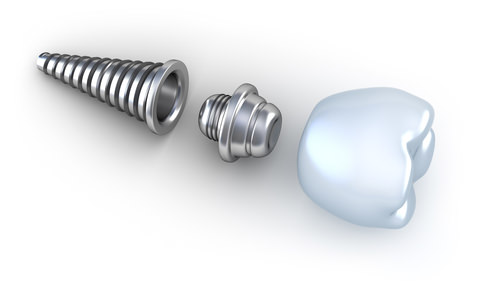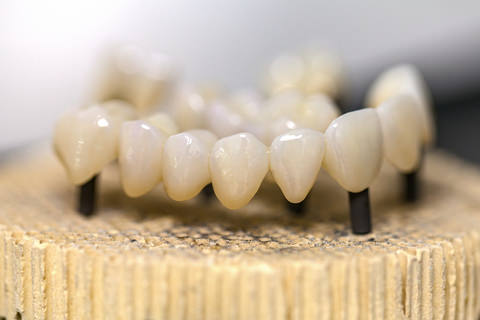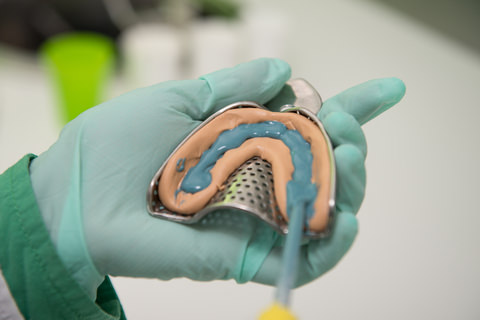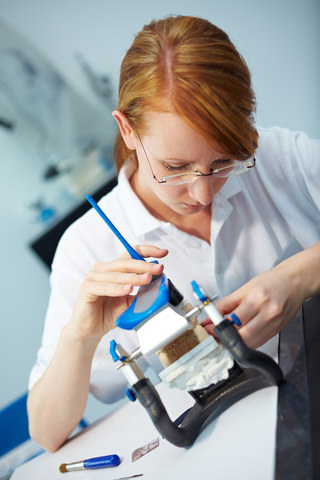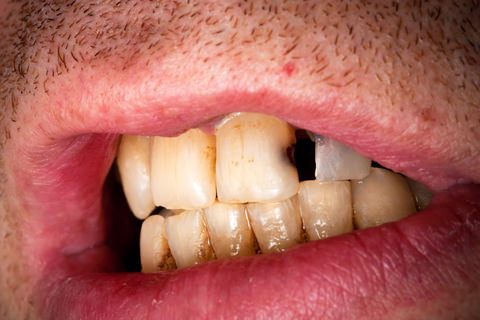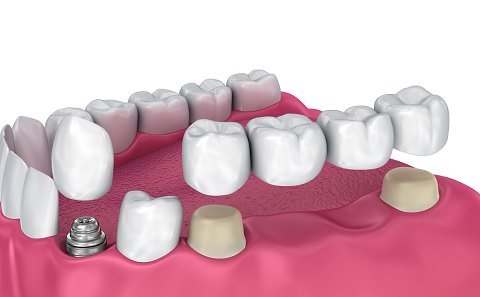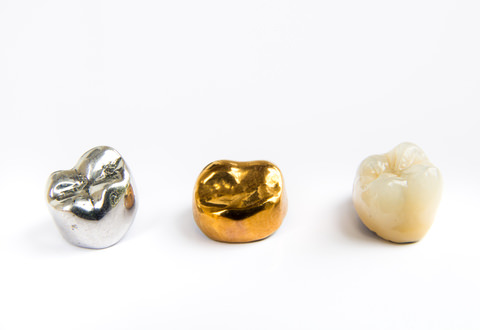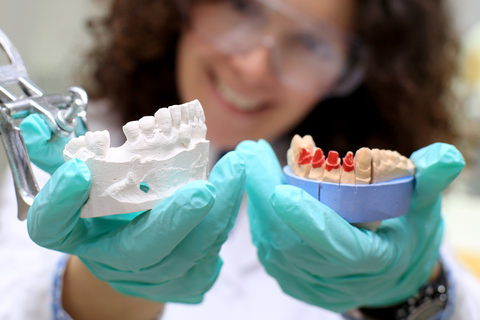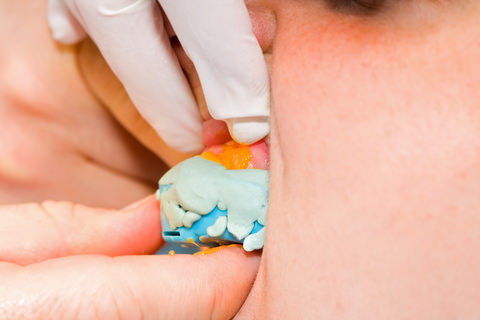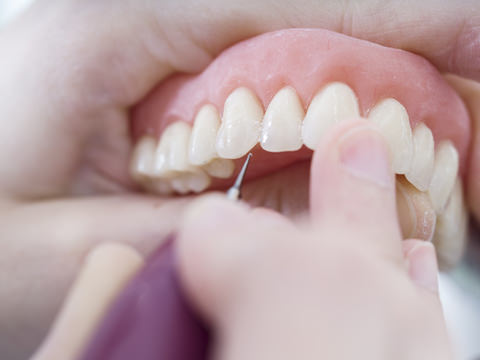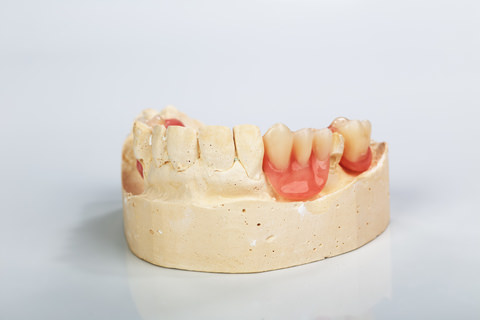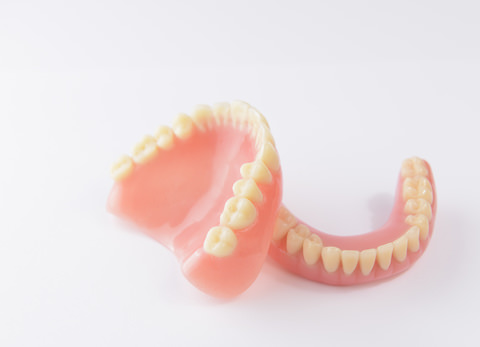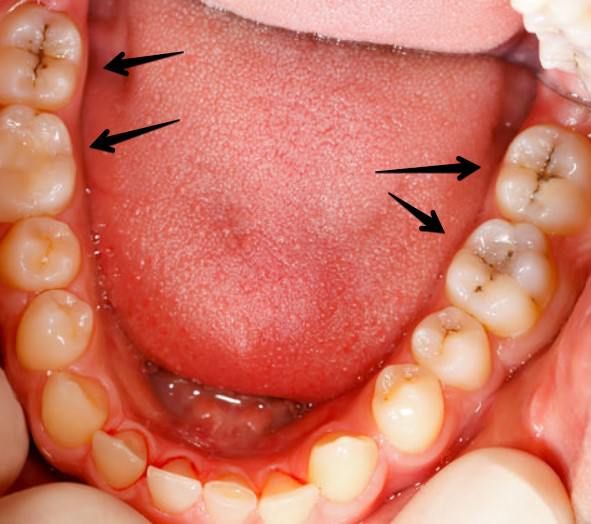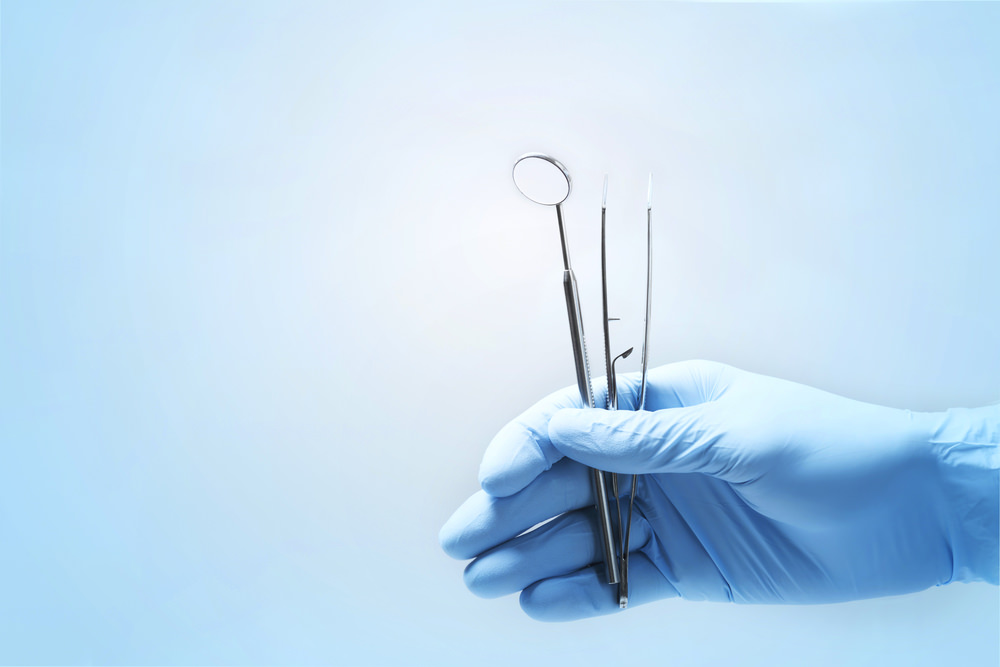Inside a Dental Laboratory: How Teeth Are Made
A dental laboratory works side by side with your dentist. If your dentist requires a specific material, most likely the dental lab will be involved.
So what does your dental lab technician do, exactly?
In this post, I’ll look at the common dental options that a dental Lab will make and discuss them in detail.
Let’s get to it!
Jump to Contents
- Dental Implants
- Bridges
- Crowns
- Dentures
- Veneers
Making Teeth: Dental Implants Discussed
Whether you’ve lost a tooth or are just looking for a replacement, one of your options can be a single implant.
Many years ago, seashells were placed into the jaws to replace missing teeth. These were among the first dental implants ever made.
Today, many different types of materials are used; these include metals and bone-like ceramics which are just as strong and smooth as the real thing.
Dental implants replace both, the natural tooth and its root.
However, if you are not comfortable with the idea of an implant, which gets screwed into your jaws, there are other solutions such as supported fixed-bridge.
All these solutions need to be ‘made,’ i.e., created from scratch by your dental technician.
Metals, which are used to create implants, need to be compatible with the human tissue to be successful.
In the mid-20th century, titanium was discovered to be the perfect metal to use for dental implants.
How are Dental Implants Made
Despite urban legends, a dentist doesn’t have a secret room where they spend free time creating implants.
Instead, they are made industrially and start off as a titanium rod.
A 4m rod is used to make more than 200 implants in one go. The rod gets inserted in a long tube which keeps it straight while feeding it to a lathe system.
The system rotates the rod and threads are cut into it forming anchors that ‘screw’ into the patient’s jaw.
The rod is then shaped, hollowed and carved to finally attach the ceramic tooth on top.
It is cleaned, analysed and undergoes final tests.
The implant is then treated to make it porous. This helps it bond better with the patient’s jaw bone.
At this point, the implant is almost completed.
It is scrubbed with water bubbles, sterilised and packed, ready to be shipped to dentists.
Apart from dental implants, there are many other options a dentist might use to fix your teeth.
Though you can find these products at the dentist’s, they are created in a dental laboratory by a laboratory technician.
- Dental Bridges
- Crowns
- Dentures
- Veneers
Dental Bridges
Dental Bridges or teeth bridges are bridges that fill the gap created by one or more missing teeth.
If one of your teeth dropped out and you are looking to fill the gap, one of the procedures you can opt for is a dental bridge.
The bridge can either be ceramic, porcelain, or metallic.
Reasons to Have a Bridge
Other than filling a gap between your teeth, dental bridges have several other benefits.
- Teeth grow until they touch. Meaning, if there is a gap between your teeth, there is a good chance that they might grow out of shape and cause problems
- Restore chewing force
- Restore speaking capabilities
- Maintain jaw-line and the shape of your face
- Prevent remaining teeth from shifting their original position
Traditional bridges
These are the most common type of bridges, made of either porcelain or ceramic.
Usually used when you have a missing tooth which is between two teeth.
Maryland-bonded bridges
These are also known as resin-bonded bridges.
Maryland Bridges are made of porcelain-fused-to-metal or plastic teeth supported by metal or porcelain framework.
These can be used either between two teeth or with only one on its side.
Cantilever bridges
These are not very common, nor are they recommended anymore because they can be damaged easily due to too much force.
When there is only one tooth missing, this bridge type can be an option.
How are They Made
Dental bridges are made in a dental laboratory by the technician, using an impression of your teeth taken by the dentist.
The lab uses the impression to make a model of your mouth.
This model will help them make a bridge using either porcelain, metal or porcelain-infused-metal to build a bridge that fits your teeth and bite precisely.
An artificial jaw holds the model which helps the technicians measure down to a millimetre how long the bridge needs to be and where the abutment teeth are.
Porcelain bridges can be made in the lab using standard equipment, but metal bridges require very high temperature and are therefore cast separately in temperatures reaching around 1300 Celsius.
Preparation
Once you’ve decided on getting a dental bridge, the first thing you’d want to do is to make sure there is no underlying disease in your teeth or gums.
Tooth decay is a serious problem that can raise its ugly head at any time.
If so, this should be discussed with your dentist and worked out.
Having a solid foundation is really important!
Process
The process of getting a dental bridge involves two visits to your dentist.
In the first visit, she will prepare your abutment teeth.
These are the two side teeth which are formed into anchors for the dental bridge to sit on.
Some enamel is removed from the teeth to allow a crown to fit on top.
The dentist then takes impressions of your teeth.
A temporary bridge will cover the exposed teeth and gums until your custom-made bridge is ready.
The second visit will be the final stage, where the temporary bridge is removed, and the new bridge sets in.
Multiple visits may be necessary to check the fit and other details.
Crowns
Crowns are precisely what the name suggests: a crown.
Dental crowns (also known as caps) are prosthetic objects cemented onto a tooth.
It is placed on top of the tooth to restore its shape, size, and strength.
Crowns can be stainless steel, metal (such as gold, titanium or another alloy), ceramic, porcelain fused with metal or all resin.
Reasons to Have a Crown
Dental crowns can be used to:
- Hold cracked teeth together.
- Hold a dental bridge in place.
- Hold a tooth’s filling in.
- Hold a tooth together after a root canal.
How are They Made
A dentist takes impressions of the patient’s tooth, which he sends to a lab technician.
The technician makes a mould of the tooth using the impression to make sure it fits with the rest.
A bite impression is taken that allows that technician to determine which teeth are not applying sufficient force.
Your dentist can then decide the thickness, width, and length of the crown and then cast it accordingly.
If the chosen material is metal, the same mould is cast at much higher temperatures (up to 1300 degrees Celsius).
Types
There are a handful of material options you can choose when deciding on Crowns:
Stainless Steel
These are usually a temporary measure, protecting the tooth or filling while you wait for your permanent crown.
It is also more commonly used for children’s teeth because they are very low-maintenance and cost-effective.
These crowns usually come out with the child’s primary tooth.
Metals
Alloys having high gold or platinum content are used to be able to withstand biting forces well.
These crowns last very long, but their colour stands out and are not as in fashion as the 1980s.
Porcelain-Fused-to-Metal
These crowns can be colour-matched, but their main drawback is their strength.
They can be chipped off, owing to their porcelain content.
All-Resin
These types of crowns are less expensive then others. However, they are prone to fracture and wear and tear over time.
All-Ceramic or all Porcelain
These provide the best colour matching with the patient’s teeth and are more suitable for people with metal allergies.
These are used for the front teeth, however, they, too are prone to chipping and breaking.
Process
After an impression is taken of your teeth on your first visit, your dentist will prepare your tooth for the crown.
They do this by removing decay or any other substances that might have built up.
She’ll then shape your teeth using a special dental file to allow the crown to sit on top of it.
A temporary crown will be set on top of your reshaped teeth to protect them from harm.
On your second visit, your dentist will remove the temporary crown and cement your permanent crown in, using a local anaesthetic to numb the tooth.
Dentures
Dentures are replacements for missing teeth that can be taken out and put back into your mouth.
They can be made out of porcelain or plastic, but with more modern dentures, a hard resin is a preferred choice.
Although senior citizens mostly use dentures, accident victims and exceptional circumstances can lead to other people utilising them early in life as well.
How Are They Made
Dentures, too, are made from the impressions a dentist takes of your mouth.
The impressions are then used to make a mould of your mouth that gives the lab technician an exact copy of what your teeth look like.
From that mould, the technician can determine which teeth are required and their measurements to fit correctly inside your mouth.
The technician makes another mould which projects what the teeth would look like and will predict what your bite will do.
The model is then ‘articulated’ on the articulator, an artificial metallic jaw used at the lab to simulate a human jaw.
The teeth for dentures are bought pre-made and positioned with hardened wax in the mould according to the patient’s requirement.
Once all the teeth are in, the technician smoothens and carves the pink wax to give it a realistic gum-like look.
These wax moulds are then placed in metallic flasks; this step is called ‘Investing the Denture.’
In the flask, the mould is set in Plaster-of-Paris and is then boiled. The boiling process removes the wax, leaving behind a void.
Acrylic is then injected into the flask, filling up the void to form the denture. The acrylic is then hardened, which takes about 7-8 hours.
The flask is emptied, and the plaster is broken to bring out the finished denture.
Complete Denture
There are two types of full dentures.
- Conventional
- Immediate
They are made only after the remaining teeth have been removed, and the gums have healed.
A conventional denture is placed in the mouth 8-12 weeks after removal of teeth.
Immediate dentures, however, can be placed as soon as the teeth are removed; this saves the patient from spending weeks without teeth.
Immediate dentures need more adjustments from time to time as the gums heal.
Veneers
Similar to that of rendering on your house, veneers are a popular and protective dental product.
Veneers don’t need the same structure as crowns and bridges.
They are only for aesthetic purposes and don’t need the solid structural element like “other teeth” made in the lab (such as using a foundation or backing with metal).
All materials used to make teeth, in general, are dependent on where the teeth in the mouth are.
Since Veneers are only on the front that is why there is no metal required in the porcelain to create a firm structure.
If the bite at the posterior segment has force (where the molars are), it won’t be enough to hold just porcelain.
Veneers can’t do this, hence the reason that crowns and bridges are made the way they are.
For further information on veneers check out our post – Dental Veneers: Your Ultimate Guide.
Conclusion
The dental lab technicians do wonders for patients.
Keeping in mind that every centimetre makes a difference, and the smallest error can have a profound impact on the patients’ wellbeing.
Waiting for days for your crown or bridge or denture to be made might seem irritating but at the end of the day when you get a perfect implant that gives you a brand new smile; isn’t it worth the wait?
Tell us about your dental work. What have you opted for and why?
By Dr. V
Created at September 04, 2018, Updated at January 25, 2025


